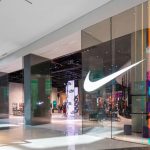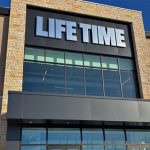Reebok International held its Annual Investor Conference on Wednesday, playing to a crowd eager to hear more about the companys plans to capitalize on its recent gains in the market – and on the street.
The company laid out three key strategies for the Reebok brand for 2003:
1. Recapture heritage as a true sports performance brand for sporting goods retailers. Reebok believes it can drive its performance categories and improve its business in the SG channel while maintaining share in athletic specialty stores, department stores, and the value channel. Reeboks Premier Running Series just passed the 1 million pair mark (500 K in the U.S.). They are also optimistic about the Foot Strike Management running product, launching in Q3 this year.
2. Focus on the European market in 2003 as a long-term growth and profit driver. Reebok views regionalization as a catalyst for brand growth and profitability in Europe. Reebok is centralizing its merchandising and selling processes rather than the previous fragmented country-by-country approach. The centralized logistics and distribution center in Rotterdam is now fully operational.
3. Japan will be a growth driver for Reeboks Asia/Pacific operations in 2003. Reeboks “stabilization period” in this region has been completed, and the company is now focused on growth. Reebok has been #7 in the Japanese market with a 2% share for many years. RBK believes the Reebok brand is significantly underdeveloped and has significant potential for growth.
Management is focused on the “power” categories, those with a double-digit share of the overall market:
· Running RBK sees opportunity in this category as it currently has less than 5% share. The company believes that it will have a significant running business in the years to come.
· BasketballReebok believes it can grow its current 10% global share. RBK has sold 1 MM pair of the retro I3 pressure shoe
· Training Reebok currently has only about 6% global market share. The company sees its partnership with the NFL as critical to growing this segment.
· Classics-Maintains a 20% share of this market and sees growth in this business.
Reebok believes that the distribution mix is shifting more toward the specialty channel rather than the mass channel. Within the Classics business, Reeboks marketing effort is focused on increasing the appeal of classics to younger consumers, noting the companys Classics business with Foot Locker has increased dramatically.
Reebok International CEO Paul Fireman commented on the Nike redistribution strategy and resulting growth of Reebok at Foot Locker as “the best thing that has happened to us in 10 years.”
“We have a partnership with Foot Locker, which is the antithesis of two years ago. They have presented us as a full franchise”, said Fireman. “That working relationship means displaying the line properly, showing the full breadth of our line and have a margin relationship we can both live comfortably with.”
The company has clearly picked up momentum from the Nike/Foot Locker fallout and is capitalizing on it better than others given the opportunity. The stroke of genius in the licensed apparel deals is also paying big dividends.
Other key bullet points from the conference:
· The company has replaced virtually 1/3 of its product team in the last two years.
· RBK brand is 20% of the U.S. business
· Marketing is 10.5% to 11% of sales. Shifting more dollars into broadcast
· The number of doors carrying sports licensing product grew in 2002 to 9,000 from 6,000.
· Long term, the company believes that the combined NBA and NFL licensed businesses have the potential to grow into a $1.0 billion business.
· Shifted its licensed business model from a chase to a futures business, targeting 75% futures.
>>> Its still to early to tell if the moves will build long-term brand equity with the target consumer, but the planets seem to be aligned right now
>>> Anyone else want to know more about that “comfortable ” margin relationship???












